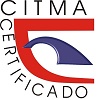Educational kinesiology exercise system for teaching third grade Mathematics
Educational kinesiology exercise system for teaching third grade Mathematics
Keywords:
educational kinesiology, teaching, mathematics, motivationAbstract
Mathematics is considered the science of deductive reasoning of spatial relationships and magnitudes, constituting an activity for resolving problematic situations of a natural and social nature. The teaching of Mathematics must contribute to the preparation of students for life, developing thinking and helping them to carry out mental operations such as: analyze and synthesize, compare and classify, generalize and specify, abstract and particularize. The research was carried out at the “Justino Báez Castro” Primary School based on the results of analysis carried out on students, teachers and the center's director; where the deficiency that students present in the subject of Mathematics is confirmed, where they generally fail to develop the skills of analyzing, synthesizing, comparing, classifying, generalizing, abstracting and concretizing; main aspects for teaching the subject in the third grade. The objective of this article is to propose a system of educational kinesiology exercises that contribute to the teaching of the subject of Mathematics in the third grade. The application of different theoretical, empirical and mathematical-statistical methods allowed us to determine the state of preparation of the students of the degree; determining their needs and potentialities. The application of the educational kinesiology exercise system demonstrated that it contributed to better preparation for students to achieve their development in the teaching of Mathematics in the third grade of primary school.
Downloads
References
Castillo Duret, G., Guerra Perdomo, M., & Zamora Pérez, Y. (2021). Sistema de ejercicios de kinesiología educativa que contribuyen al aprendizaje de la matemática en los escolares de primer grado. Varona Revista Científica Metodológica, núm. 73. Disponible en: https://www.redalyc.org/articulo.oa?id=360670689004
Dennison, P. E., & Dennison, G. E. (2003). Cómo aplicar gimnasia para el cerebro (Primera ed.). (M. Schoenfeld, Ed.) México, D. F. México, México: Editorial Pax México. Recuperado el septiembre de 2023, de http://www.editorialpax.com
del Carmen Domínguez, D., Rodríguez Peñate, M., & Balmaseda Neyra, O. (2020). Sistema de actividades para la construcción del texto expositivo escrito: una experiencia en el primer año de la carrera en Español de la Universidad de Panamá. Varona. Revista Científico Metodológica, No. 71. http://scielo.sld.cu/scielo.php?script=sci_arttext&pid=S1992-82382020000200054
Gómez Cumpa, J. (2004). Neurociencia cognitiva y educación. Lima: Fondo Editorial FACHSE - UNPRG. Recuperado de http://www.aacademica.org/jose.wilson.gomezcumpa/4
González Castro, J. C. A., Tostado Assid, J. M., González González, A., Corrales Félix, G. L., Lozáno González, A. R. L. & Morquecho Sánchez, R. (2023). Kinesiología Educativa, Cerebro, Enseñanza y Aprendizaje. Ciencia Latina. Revista Científico Multidisciplinar, vol. 7, No. 5. http://doi.org/10.37811/cl_rcm.v7i5.7991 https://ciencialatina.org/index.php/cienciala/article/view/7997
Leché Martín, E. M., & Alcalá Pedrazo, V. (2007). Kinesiología educativa: Gimnasia para el cerebro-brain gym. Revista Aula Libre, No. 85, pp. 21-23. Disponible en https://dialnet.unirioja.es/ejemplar/158671
Lucia Campos, A. (2010). Las neurociencias y la educación en la búsqueda del desarrollo humano. Revista Digital La Educación, No. 143, pp. 1-14. Disponible en https://repositorio.upn.edu.pe/handle/11537/25280
Ortiz Choez , W. A., Torres Villegas, I. d., & Ortiz, A. W. (2017). La enseñanza de la Matemática y su influencia en el desarrollo del pensamiento. (O. Nieves Torres, Ed.) Las Tunas, Las Tunas, Cuba: Editorial Académica Universitaria (Edacun). ISBN: 978-959-7225-25-6. Recuperado el 10 de 10 de 2023 disponible en http://edacunob.ult.edu.cu/bitstream/123456789/29/1
Pérez López, J., García Valdés, J. R., & Cuní González, B. J. (2017). Sistema de actividades para el desarrollo de la Educación Ambiental en la comunidad ¨El Jagüey¨. Revista Mendive. 15(2). Recuperado de http://scielo.sld.cu/scielo.php?script=sci_arttext&pid=S1815-76962017000200009
Romero R., Cueva, H., & Barboza, L. (2014). La gimnasia cerebral como estrategia para el desarrollo de la creatividad en los estudiantes. Varona Revista Omnia, vol. 20, núm. 3, pp. 80-91. Disponible en: http://www.redalyc.org/articulo.oa?id=737370091006
Villalón Incháustegui, M., Peña Gálvez, R. L., León Figueras, N., Garea Alonso, L., Bello Domínguez, M., Verela Piloto, L., & Rizo Cabrera, C. (2015). Orientaciones Metodológicas. Tercer grado (Sexta ed., Vol. Tomo 2). (M. Valdéz Lara, & M. Jorge Perdomo, Edits.) La Habana, La Habana, Cuba: Editorial Pueblo y Educación. Recuperado el septiembre de 2023
Published
How to Cite
Issue
Section
License
Copyright (c) 2024 Yaumara Zamora Pérez , Idania Licea de la Vega , Yamila Rojas Llerena

This work is licensed under a Creative Commons Attribution 4.0 International License.
Horizonte Pedagógico es una revista Open Access, lo que quiere decir que todo su contenido es accesible libremente sin cargo para el lector o su institución. Los usuarios están autorizados a leer, descargar, copiar, distribuir, imprimir, buscar o enlazar a los textos completos de los artículos de esta revista sin permiso previo del editor o del autor, de acuerdo con la definición BOAI de open access. Los autores que publican en esta revista están de acuerdo con los siguientes términos: Los autores conservarán los “Derechos de autor” y garantizan a la revista el derecho de ser la primera publicación del trabajo. La revista se encuentra protegida bajo una licencia internacional de Creative Commons Attribution License Atribución 4.0 Internacional (CC BY NC 4.0), que permite a otros compartir (copiar y redistribuir el material en cualquier medio o formato) y adaptar (remezclar, transformar y construir a partir del material), para cualquier propósito, incluso comercialmente. Bajo las siguientes condiciones: atribución (usted debe dar crédito de manera adecuada, brindar un enlace a la licencia, e indicar si se han realizado cambios y no comercial — Usted no puede hacer uso del material con propósitos comerciales. Puede hacerlo en cualquier forma razonable, pero no de forma tal que sugiera que usted o su uso tienen el apoyo de la revista o el autor de la publicación.






















